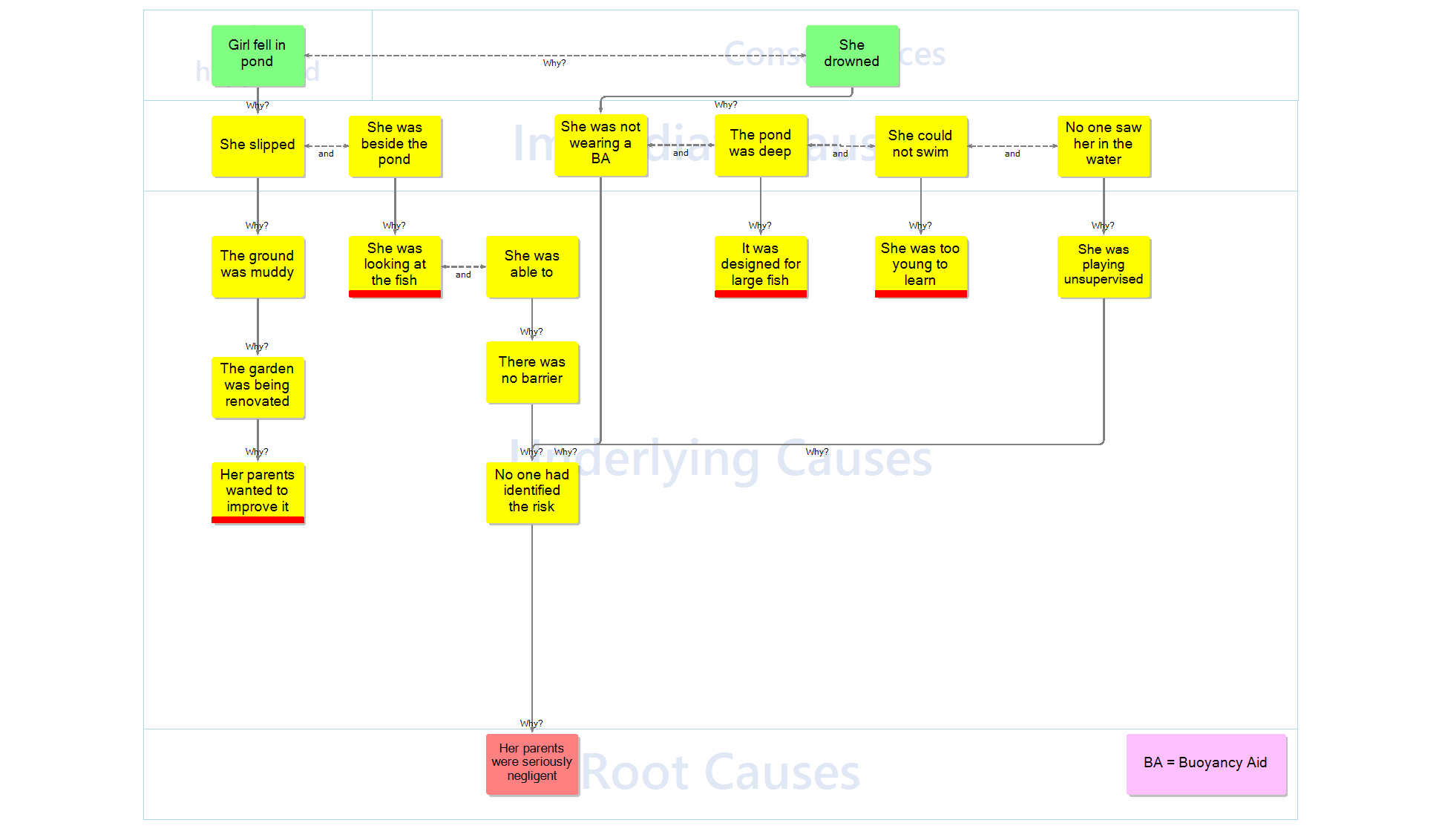We are sometimes asked how the Kelvin TOP-SET Root Cause Analysis (RCA) system compares with other RCA systems.
Here we will look at the ‘5-Whys’. To make the comparison we first ask, “What does the phrase ‘5-Whys’ imply?” It implies that you have to take five ‘Why’ steps to get to a Root Cause. We don’t agree. It also implies that the steps are linear with no divergence or convergence. We don’t agree.
Let’s compare the two systems using an imagined but tragic incident, which happens all too often:
A 3-year-old girl falls into a garden pond and drowns. Can we undertake a 5-Why analysis on this? Yes.
Because she fell in the pond
Because she slipped
Because the ground was muddy
Because the garden was being renovated
Because her parents wanted to improve it
These five whys lead to a Root Cause, but the Root Cause, although true, isn’t very helpful.
Take a look at the our analysis of the same incident below, and you get a totally different picture. The Root Cause is much more useful and informative, and many more related issues are addressed. The beauty of the Kelvin TOP-SET system is that there is no insistence on using five whys, and there is the freedom to diverge (branch out) or converge (come together) where necessary.
In truth, six criteria must have been met before this girl could drown: (1) She had to slip, (2) there must have been no barrier, (3) the water had to be deep enough for her to be submerged, (4) she must have been unable to swim, (5) she must not have been wearing a floatation device, and (6) she must have been unsupervised. She drowned because all six criteria were met. If you fixed any one of these, she would be alive and well.
The analysis shows that the Incident Statement is crisp and clear, and each part can be questioned easily. Moreover, there can be as many Immediate Causes as you like, and as many ‘Why’ steps as you need. In this particular example there are six Immediate Causes, which is more than normal, and a maximum of four ‘Why’ steps, which is more than adequate to complete the analysis. Therefore, a major problem with the 5-Whys is that it can easily result in much important information being omitted from the analysis. This is not good. The Kelvin TOP-SET analysis system is certainly SIMPLE but it is not SIMPLISTIC.
But, there is another serious flaw with the 5-Why approach. The Internet, if it is to be believed, tells us that the prime purpose of the 5-Why approach is to determine the Root Cause(s) of a problem. The implication of this, and other similar approaches, is that the intervening steps – the other so called ‘causal factors’ – are not particularly important.
We are not sure this is wise for two very significant reasons:
This is much better illustrated using specific examples, so if we look back at the incident described above, the Root Cause was the careless attitude of the parents. If we re-educate the parents, can we be sure that another child of theirs will not drown in the pond? It seems very likely, given the gravity of the event, but we cannot be absolutely certain.
However, if we put a grid over the pond then we can be certain that same event will not happen again with their child, and better, any other child who happens to be playing in the garden! We have fixed an Immediate Cause and ensured that the same incident will never happen again. Was that worth doing? We think so.
So, the Kelvin TOP-SET approach is to analyse every event, thoroughly, using as many ‘whys’ as required, and looking at all the causes that contributed to the event: the Immediate Causes, the Underlying Causes and the Root Causes. Once complete, we then consider controls, barriers and defences at ALL levels of the analysis, not just the Root Causes.




